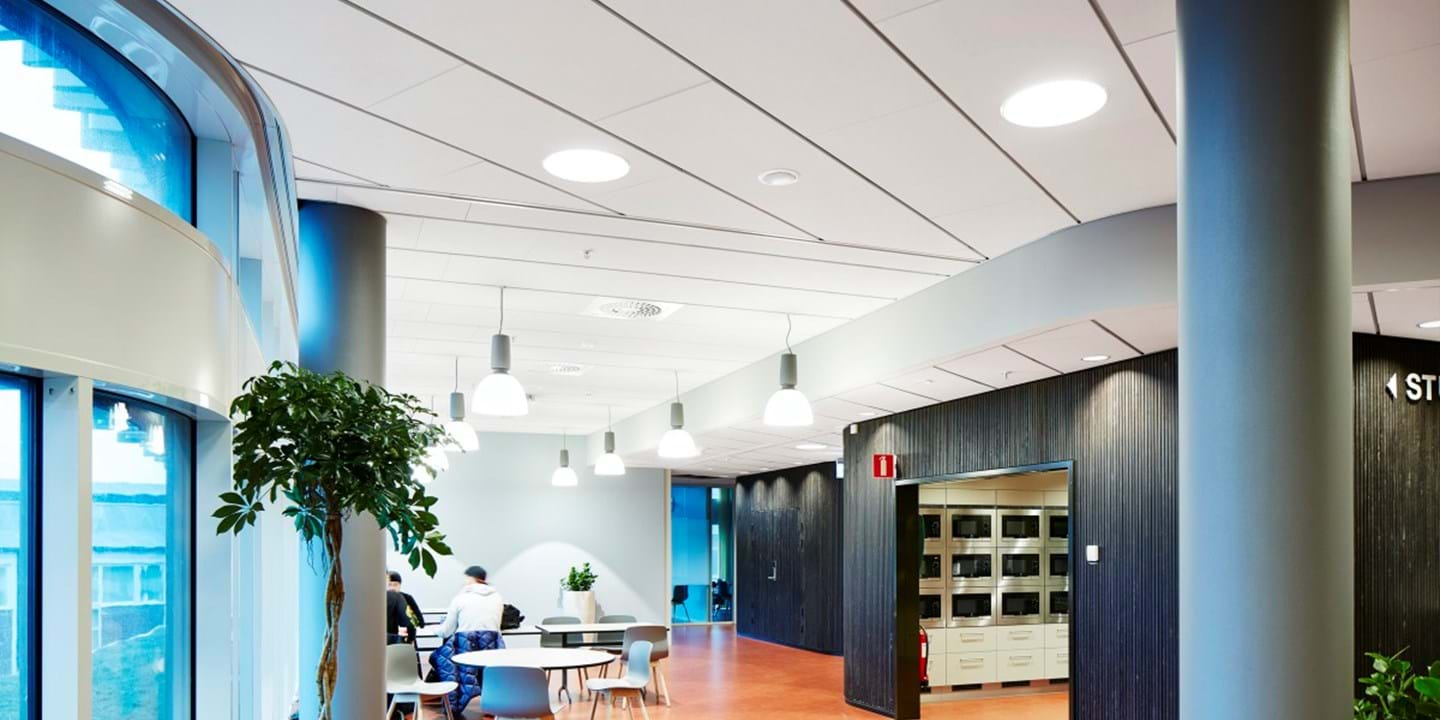Acoustics for additional spaces


A lot of people arrive at school at the same time and many conversations will take place when people are moving around to get to where they are going. This easily leads to very high sound levels and creates a stressful environment. The acoustic solution is to:
Music rooms are often used for many purposes. There can be whole classes singing, acoustic instruments, amplified instruments or lectures on music theory. The sounds will vary in loudness and frequencies and to find the ideal solution it is important to decide which the most prioritized activity is. But in general, any music room needs:
Staff rooms are a private space away from the students where staff can have a break, relax and have informal and formal meetings and conversations with other teachers outside their timetabled lessons. The acoustic solution needs to:
Whatever the nature of the education activity, the right acoustic environment is crucial for success. Workshops and laboratories involve the use of all kinds of machinery and tools, and there are often important hygiene requirements. It's therefore essential to choose an acoustic solution that:
Laboratories:
Workshops:
In changing and shower rooms there are often a lot of hard surfaces, such as ceramic tiles, covering walls and ceilings. Since this makes sound bounce around, noise levels are often very high. A sound-absorbing ceiling in this type of space must:
Shower rooms:
Changing rooms:
A kitchen is a sterile and clean environment. But it is often a busy space where metal, pots, pans, cutlery, glasses and trays create a lot of noise, making it hard for people to communicate. The acoustic solution for a kitchen should: